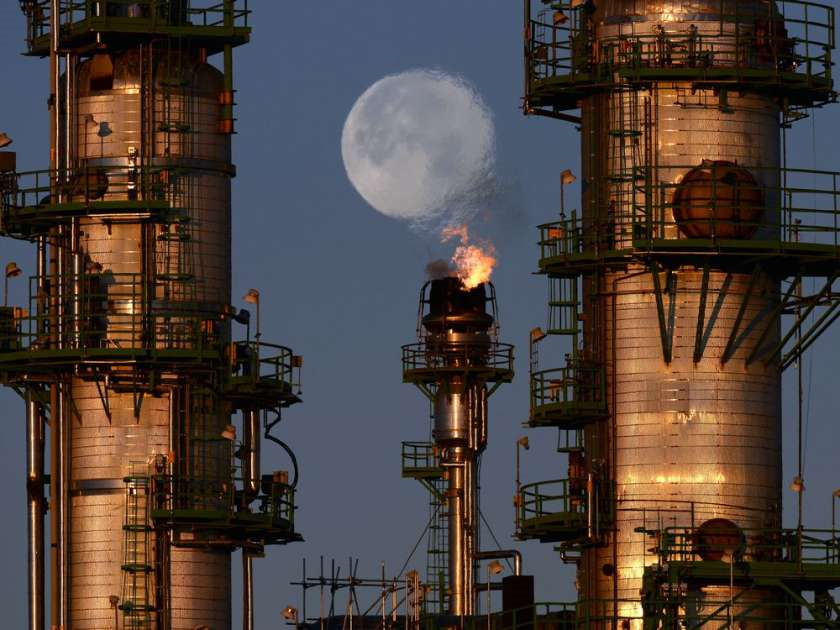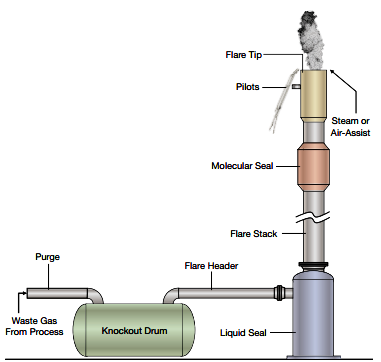Flare systems are designed to safely burn excess hydrocarbon gases that cannot be recovered or recycled. Flare stacks are primarily used for burning off flammable gas released by pressure relief valves during unplanned over-pressuring of plant equipment. During flaring, the excess gases are combined with steam and safely burned in the flare. This is safer and more environmentally friendly than releasing the hydrocarbons directly into the atmosphere.

During normal operations, hydrocarbons are refined, collected and routed for further processing into products such as gasoline. When a facility experiences a process interruption, such as an unplanned loss of power, the system may be unable to send the hydrocarbons through for further refining. Flares are also used to ensure safety during the startup and shutdown of equipment when gases generated by those processes cannot be safely recycled into the refinery.
In both cases, the excess hydrocarbons are routed to the flare system where they are combined with steam and safely burned. Combining the excess hydrocarbons with steam ensures maximum combustion so that chemical destruction is complete and emissions are minimized.
Improperly operated flares may emit methane and other volatile organic compounds as well as sulfur dioxide and other sulfur compounds, which are known to exacerbate asthma and other respiratory problems. Other emissions from improperly operated flares may include, aromatic hydrocarbons (benzene, toluene, xylenes) and benzapyrene, which are known to be carcinogenic.

Similar to the pilot light on a household gas stove or hot water heater, a small flame at the top of the flare burns continuously, ensuring the system is ready for immediate use. Depending upon the construction of the flare, weather conditions, and ambient lighting, the pilot flame may or may not be visible from the ground. When flaring occurs, the flame and noise level will increase due to the increased volume and pressure of the gases being burned by the flare. Refinery operators continuously monitor the flare system to minimize noise and smoke levels, while still burning the gases cleanly and safely.
